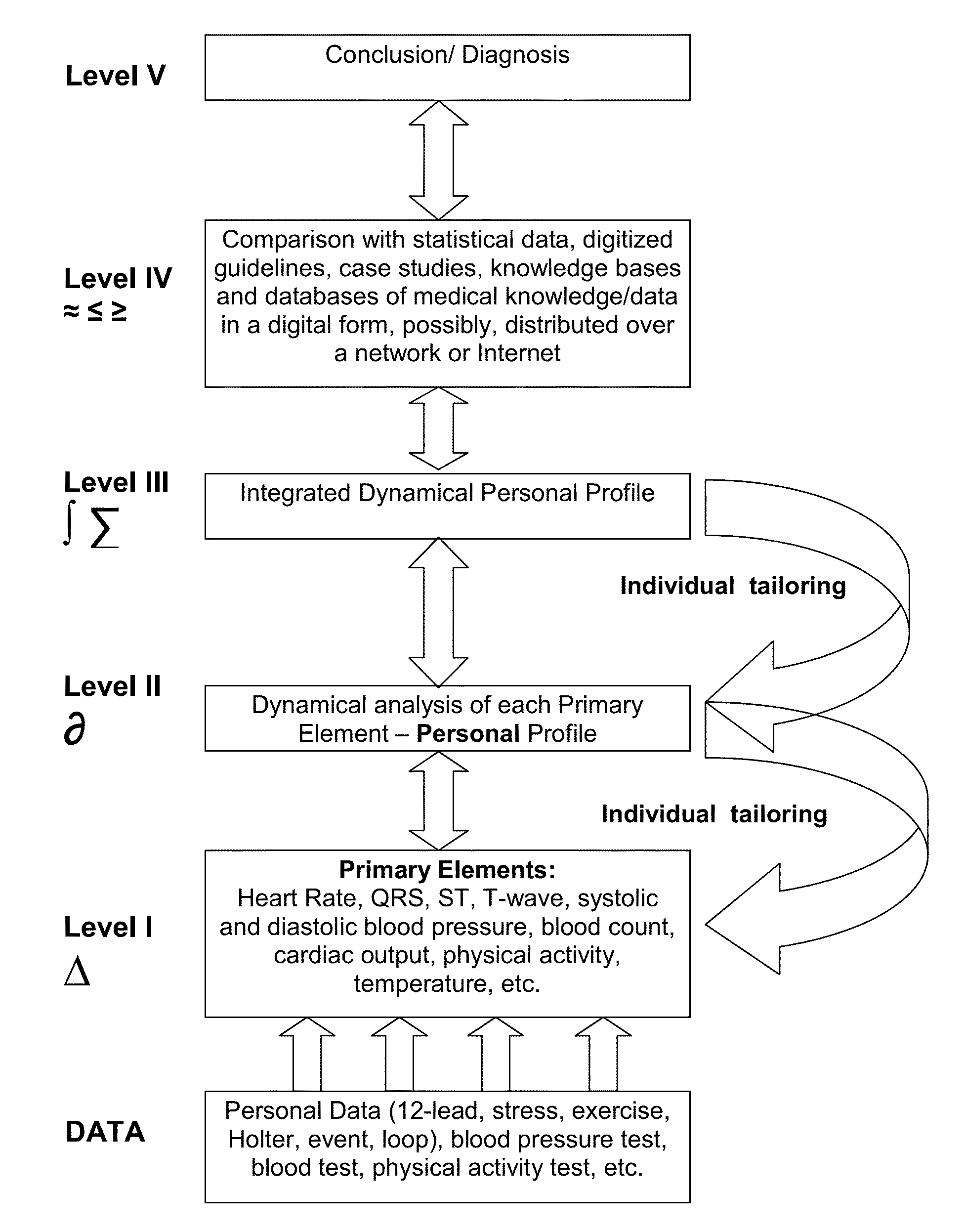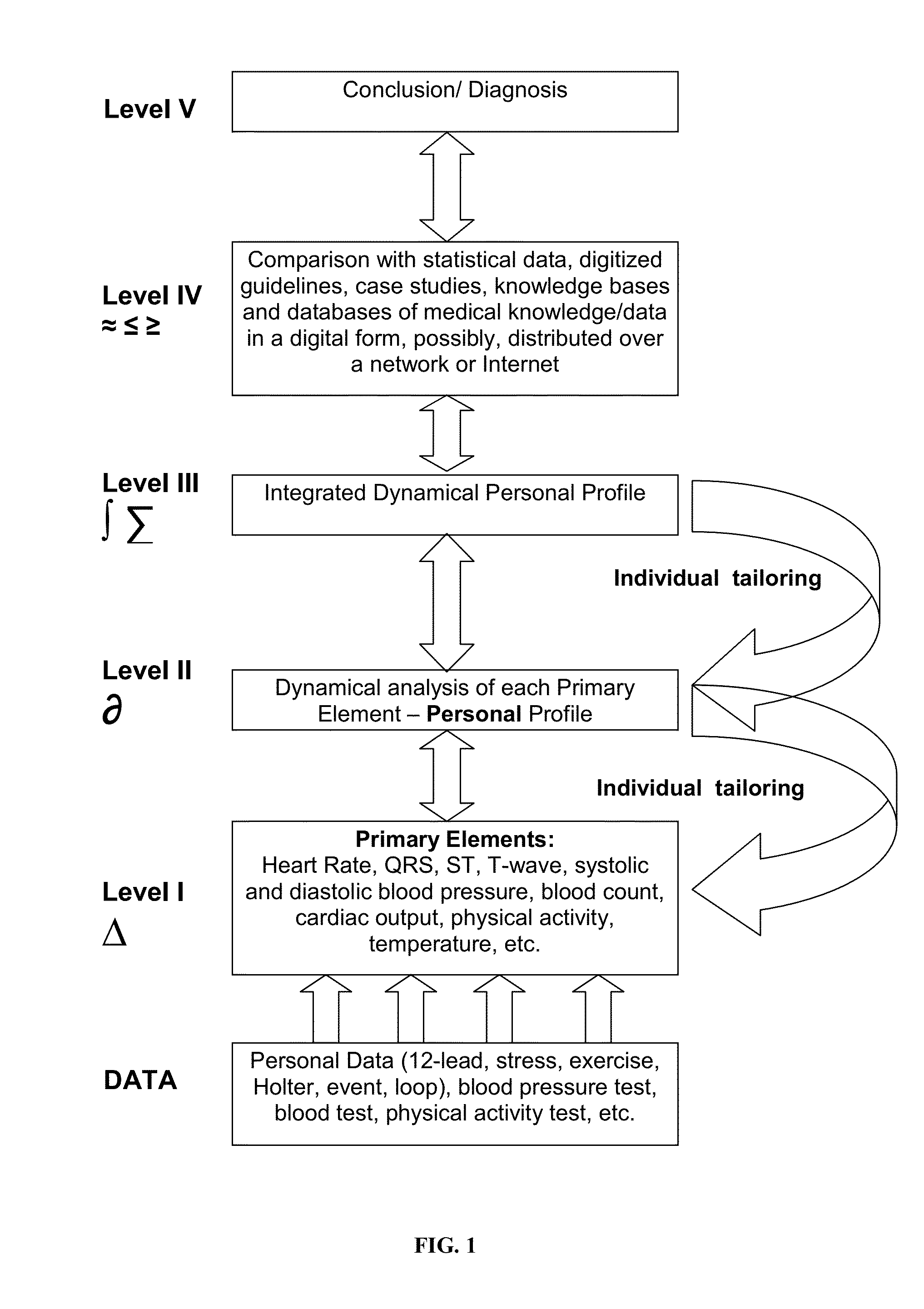Mobile System with Network-Distributed Data Processing for Biomedical Applications
a biomedical application and mobile system technology, applied in applications, instruments, tomography, etc., can solve the problem of computational complexity of serial analysis, and achieve the effect of optimizing decision making, reducing costs, and improving patient care quality
- Summary
- Abstract
- Description
- Claims
- Application Information
AI Technical Summary
Benefits of technology
Problems solved by technology
Method used
Image
Examples
example 1
Application for Remote Management of Patients with Heart Failure
[0156]Congestive heart failure (CHF) afflicts more than 5 million Americans, causing over a million hospital admissions every year. The estimated annual cost of this illness to the US economy is $39 billion. One half of these costs can be attributed to hospitalizations related to CHF decompensation, and nearly half of hospital readmissions are caused by medication or dietary nonadherence. Assessing CHF progression is challenging, because the standard-of-care periodic evaluations of body weight, blood pressure, and clinical symptoms cannot provide an early indication of CHF worsening. Moreover, recently introduced implantable sensors for tracking intrathoracic fluid accumulation (which are costly, require time-consuming insertion procedures, and carry the risk of complications) have not produced consistent results.
For remote monitoring of CHF patients at home, they are given:[0157]miniaturized data collection modules (DC...
example 2
Application for Remote Detection and Differential Diagnosis of Syncope
[0162]Syncope (loss of consciousness) accounts for 3-5% of emergency department visits and 1-6% of all urgent hospital admissions in the US. As many as 1-2 million Americans are evaluated annually for syncope, and the costs associated with diagnostic tests, hospitalization and clinical management are overwhelming. The diagnostic evaluation is complicated by an extensive range of possible etiologies, from cardiac to neurological and psychiatric disorders. Furthermore, up to 47% of patients may be discharged without final diagnosis, and the 1-year mortality rate in syncope of cardiac origin could reach 18—-33%. This indicates the need and importance of developing clinical diagnostic modalities that could help differentiate between benign and life-threatening etiologies of syncope.
[0163]By allowing simultaneous collection of a high-quality (diagnostic) 12-lead ECG, physical activity and body position over prolonged p...
PUM
 Login to View More
Login to View More Abstract
Description
Claims
Application Information
 Login to View More
Login to View More - R&D
- Intellectual Property
- Life Sciences
- Materials
- Tech Scout
- Unparalleled Data Quality
- Higher Quality Content
- 60% Fewer Hallucinations
Browse by: Latest US Patents, China's latest patents, Technical Efficacy Thesaurus, Application Domain, Technology Topic, Popular Technical Reports.
© 2025 PatSnap. All rights reserved.Legal|Privacy policy|Modern Slavery Act Transparency Statement|Sitemap|About US| Contact US: help@patsnap.com



